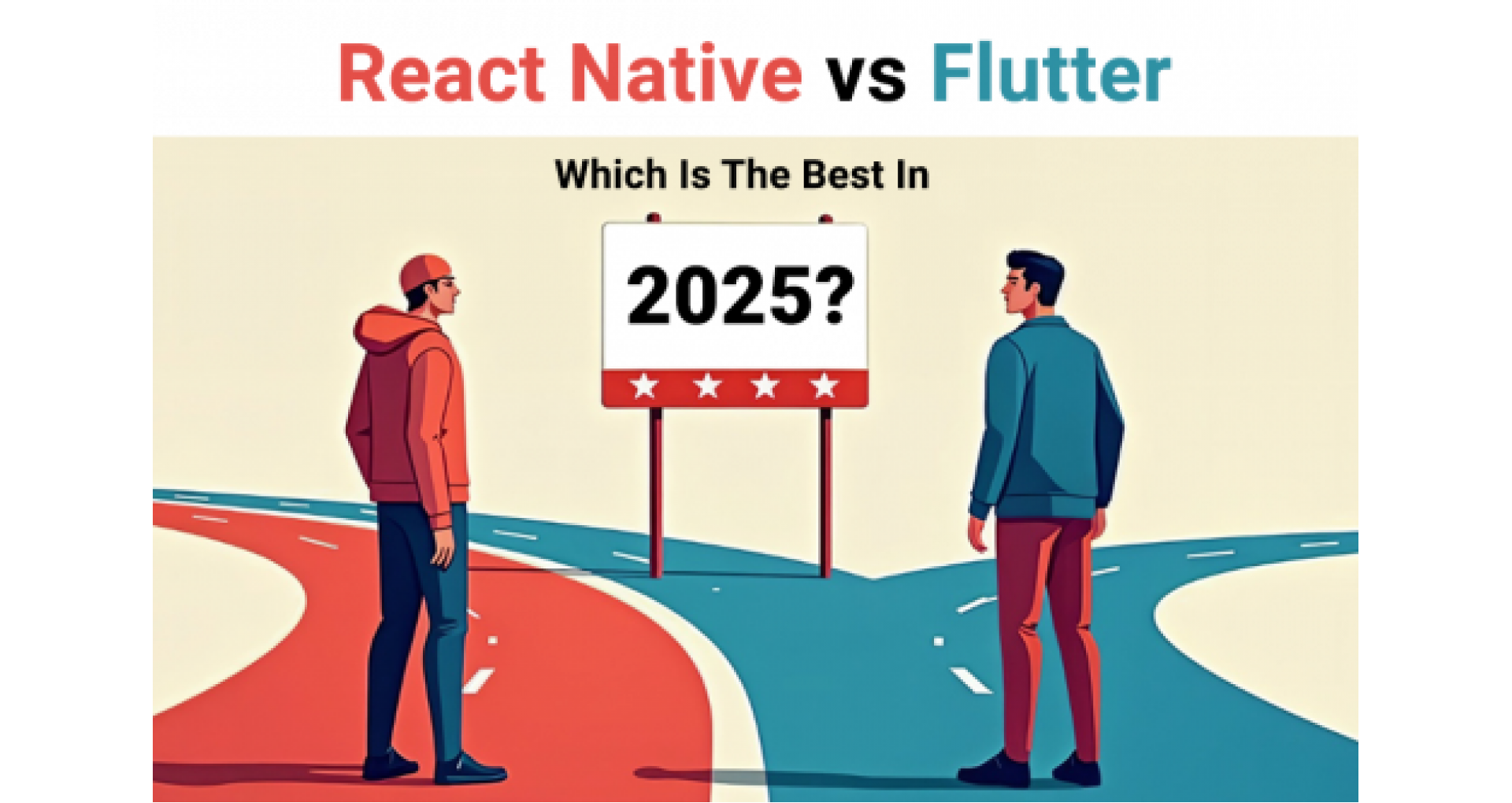
React Native vs Flutter: Which Is The Best in 2025?
In the fast-changing world of mobile app development, two names stand out: React Native and Flutter Development. Both frameworks promise high performance, near-native experiences, and the ability to craft beautiful apps with less effort. But in 2025, with both technologies more mature than ever, which one truly leads the race?
Let's compare React Native and Flutter in 2025. We will look at performance, ecosystem, learning curve, and community support.
What Are React Native and Flutter?
React Native is a JavaScript framework created by Meta (formerly Facebook) allowing developers to create mobile applications with React. It compiles to native code. This gives a smooth user experience. It also allows code reuse on platforms like iOS and Android.
Flutter, on the other hand, is a UI toolkit created by Google that uses the Dart programming language. It builds natively compiled apps for mobile, web, and desktop from a single codebase. Flutter is known for its clear user interface and great performance. It has become popular with developers who want creative freedom and precise design.
Head-to-Head: React Native vs Flutter in 2025
1. Performance
- Flutter leads the performance battle in 2025. Thanks to its direct compilation to ARM or x86 code, animations and transitions are smooth and consistent. There is no need for a JavaScript bridge.
- React Native is still a strong choice, but it can have performance issues because of its bridge design. However, the new Fabric renderer and TurboModules have improved performance in recent years.
Winner: Flutter
2. Developer Experience & Productivity
- React Native still holds an edge when it comes to developer productivity. JavaScript is well-known. Its hot-reloading feature, rich plugin ecosystem, and integration with web technology make it easier to learn.
- Flutter also boasts hot reload and a vast widget library, but Dart is still a barrier for developers unfamiliar with it. That said, the tooling around Flutter has improved dramatically in 2025.
Winner: React Native (narrowly)
3. UI and Customization
- Flutter shines with its custom rendering engine. Want a curved, animated, 3D-like button? No problem. The “everything is a widget” philosophy gives you control over every pixel.
- React Native uses native components. This can limit how much you can customize the UI. To get around this, you may need to use native modules or third-party libraries.
Winner: Flutter
4. Community and Ecosystem
- React Native benefits from the massive JavaScript and React ecosystems. It has more developers, more packages, and more third-party integrations.
- Flutter’s community is growing fast, but in terms of sheer size and maturity, React Native still takes the lead.
Winner: React Native
5. Platform Support
- Both frameworks work on iOS and Android. However, by 2025, developers also use Flutter more for web and desktop apps. This offers a better cross-platform approach.
- React Native primarily focuses on mobile, although developers have created experimental efforts like React Native for Web.
Winner: Flutter
6. Corporate Backing
- React Native: Backed by Meta, it powers apps like Facebook, Instagram, and Discord.
- Flutter: Backed by Google, it powers the likes of Google Pay and other high-profile apps.
Both have strong support from their companies. However, Flutter appears to fit better with Google’s multi-platform vision, like Fuchsia and the Dart ecosystem.
Winner: Draw
React Native or Flutter in 2025: Which Should You Choose?
Choose React Native if:
- You’re already invested in the JavaScript/React ecosystem.
- You need to build MVPs quickly with a vast set of libraries.
- You prefer a lower barrier to entry for new developers.
Choose Flutter if:
- You want high performance and full control over UI/UX.
- You’re targeting mobile, web, and desktop from one codebase.
- You’re comfortable learning Dart or working with design-heavy apps.
React Native, created by Meta (formerly Facebook), is a JavaScript framework that allows developers to create mobile applications with React.
Final Verdict
In 2025, the battle between React Native and Flutter is tighter than ever. Flutter Development wins on performance, UI flexibility, and cross-platform capabilities, while React Native remains a go-to for productivity and ecosystem familiarity.
Ultimately, the “best” choice depends on your team’s expertise, your app’s goals, and your long-term vision. Both frameworks are reliable, future-proof, and backed by tech giants. So instead of asking which is better, ask which is better for YOU.



